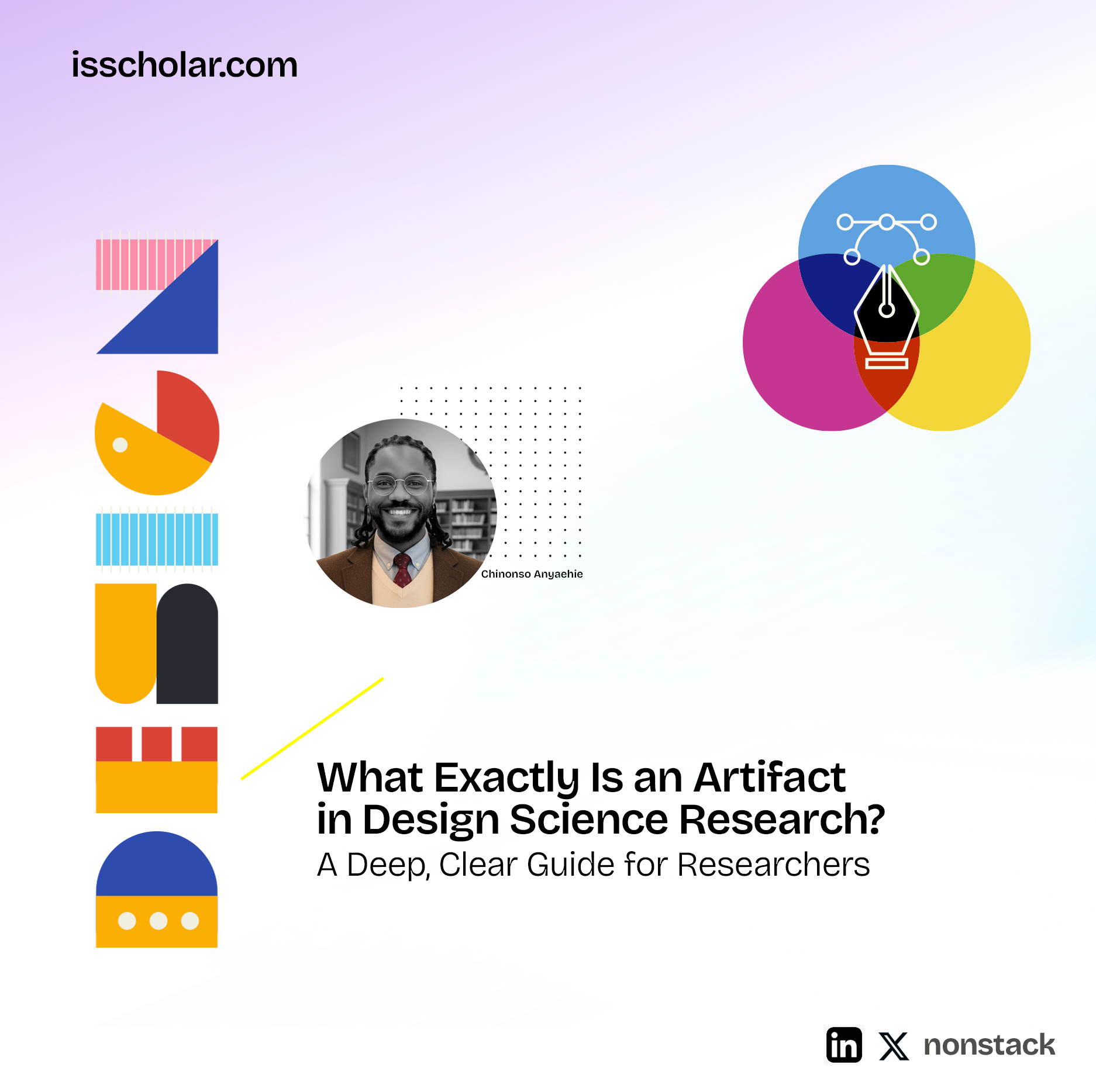Design Science Research (DSR) has evolved across decades and disciplines, shaped by foundational contributions that clarify what it means to design as a form of inquiry. Three key propositions capture this evolution:
- Archer: Design can be structured.
- Hevner: Design can be scientific.
- DSRM: Design can be methodologically performed and published.
Together, these propositions show how design matured from a practical craft into a rigorous scientific paradigm with recognized processes, outputs, and evaluation standards.
This article compares and contrasts these three perspectives and illustrates their contributions using clear examples.
🔶 1. Archer: Design Can Be Structured
Archer’s Contribution
Bruce Archer, one of the pioneers of design methodology in engineering, believed that design was not merely intuitive creativity or craftsmanship. Instead, he argued that design could—and should—follow a structured, systematic process.
Archer’s six stages of design (programming, data collection, analysis, synthesis, development, prototyping, documentation) were groundbreaking because they:
- Treated design as a formal process, not an art
- Broke complex problems into manageable parts
- Provided repeatable steps
- Allowed designs to be evaluated and improved
Archer’s perspective brought order to what had previously been seen as unpredictable or purely creative.
Example
Designing a new gear-locking mechanism (engineering context)
Instead of relying on gut instinct, the engineer:
- Defines the objective (safe, fail-proof locking)
- Gathers data (load constraints, materials, safety standards)
- Synthesizes requirements
- Develops models
- Builds prototypes
- Documents results
Archer shows that design can be structured like any other disciplined process.
🔶 2. Hevner: Design Can Be Scientific
Hevner’s Contribution
Hevner brought design out of engineering and into Information Systems by arguing that design is a legitimate scientific activity when conducted with rigor, relevance, and systematic evaluation.
His 7 Design Science Guidelines introduced the idea that artifacts must:
- Address real, important problems
- Be rigorously evaluated
- Be grounded in theory
- Create verifiable knowledge
- Make contributions to the scientific community
In other words:
Design becomes scientific when it is theory-informed, systematically evaluated, and generates generalizable knowledge—not just a one-off solution.
Example
Building a fraud-detection algorithm (IS context)
The design becomes scientific when:
- The problem is real and relevant (fraud losses)
- The artifact is theoretically grounded (pattern recognition theory)
- It is evaluated (accuracy tests, ROC curves, precision/recall)
- Findings are published (scientific contribution)
The artifact is not just “useful.” It produces scientific knowledge.
🔶 3. DSRM: Design Can Be Methodologically Performed and Published
DSRM’s Contribution
Peffers et al.’s Design Science Research Methodology (DSRM) synthesized decades of DSR thinking into a step-by-step process model:
- Identify problem
- Define objectives
- Design and develop
- Demonstrate
- Evaluate
- Communicate
The DSRM gives researchers a commonly accepted blueprint for performing and publishing design research. It clarifies:
- What reviewers should expect
- How authors should structure DSR papers
- Where rigor must be applied
- Where iteration is allowed
- How artifacts should be demonstrated and evaluated
Without DSRM, DSR work risked being dismissed as case work, consulting, or “just building a tool.”
With DSRM, design became publishable in top IS journals.
Example
Creating a decision-support dashboard for hospital triage (IS context)
Using the DSRM:
- Define the triage problem
- Set objectives (reduce wait time by 20%)
- Build dashboard prototype
- Demonstrate with real cases
- Evaluate with performance data
- Publish findings in a structured DSR paper
The DSRM turns a practical design effort into methodologically valid scientific research.
⭐ Comparing the Three Propositions
| Proposition | Archer | Hevner | DSRM |
|---|---|---|---|
| Core Idea | Design can be structured | Design can be scientific | Design can be methodologically performed & published |
| Primary Contribution | Formalizes design into steps | Gives design scientific legitimacy | Provides a unified method for doing DSR |
| Focus | Process structure | Rigor + relevance + contribution | Executable, repeatable research process |
| Discipline Origin | Engineering | Information Systems | Information Systems |
| Evaluation Role | Optional prototype testing | Mandatory rigorous evaluation | Full demonstration + evaluation step |
| Output | Functional designs | Validated scientific artifacts | Publishable DSR knowledge |
| Impact | Makes design teachable | Makes design scholarly | Makes design accepted in IS research |
⭐ How They Work Together (A Coherent Evolution)
If you combine the three propositions, you get the full logic of modern Design Science Research:
1. Archer: Design is structured.
You CAN design systematically.
2. Hevner: Design is scientific.
You MUST design rigorously and evaluate your artifact.
3. DSRM: Design is methodological and publishable.
You SHOULD follow a clear process so the research community can evaluate, replicate, and accept your work.
Together, they form the foundation of DSR in Information Systems.
🎯 Final Synthesis
Archer showed that design is not chaotic.
Hevner showed that design is scientific.
The DSRM showed that design is researchable, repeatable, and publishable.
Archer → Structure
Hevner → Scientific Rigor
DSRM → Methodological Practice
This progression explains how design evolved into a recognized research paradigm that produces valuable, theory-infused, rigorously evaluated artifacts capable of solving real-world problems while generating new scientific knowledge.









Leave a Reply